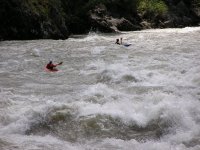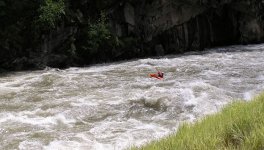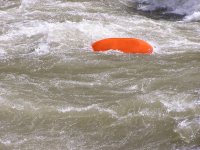I'm betting the South Fork, but honestly not to sure (been on both). North fork is much more difficult.
Thing that always impressed me with the water out there (Idaho) is that from the road, it looks small (whitewater), but actually on it, it can be huge (as big as the Upper Gauley or Ottawa in the east).
Not sure if many people are familiar with it, but if you get up to Crouch, there is the "middle fork of the payette" which is a great river as well, and a great road drive to boot.
Bob, we call kayaking out west "roadside boating" at its best. Lots of river runs out there run along a highway of some sort. Anytime coming up to summer, on a highwayroad, you will most likely see some kayaker somewhere boating. The water lever is not determined by rain as it is in the east, but by "snowpack", the level or amount of snow that has been accumalated (sp?) in the mountains. The more snowpack from the winter, the higher the water level will be in summer. Hotter the days, higher the rivers, as long as you had a good snowpack from the previous winter. Keep in mind, July it could be 90 degrees outside, but you probably will need a drytop because that river water is coming from snow in the mountains, and its COLD.






